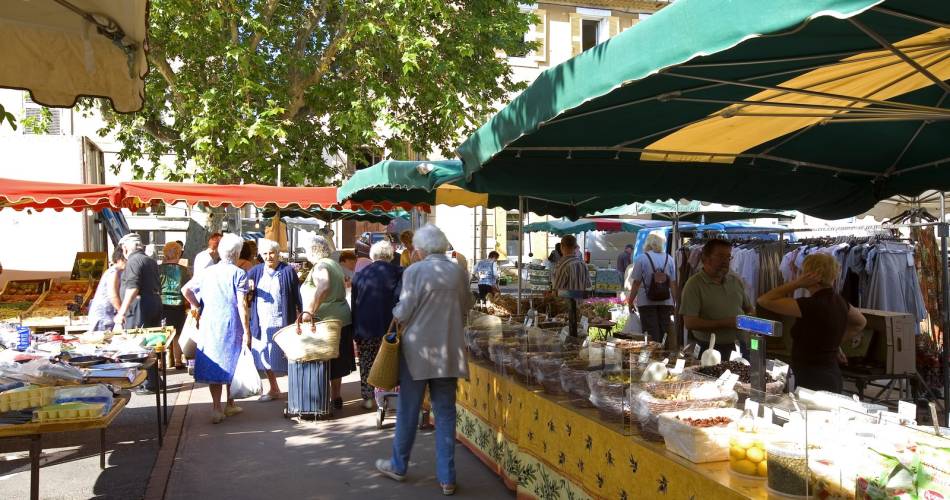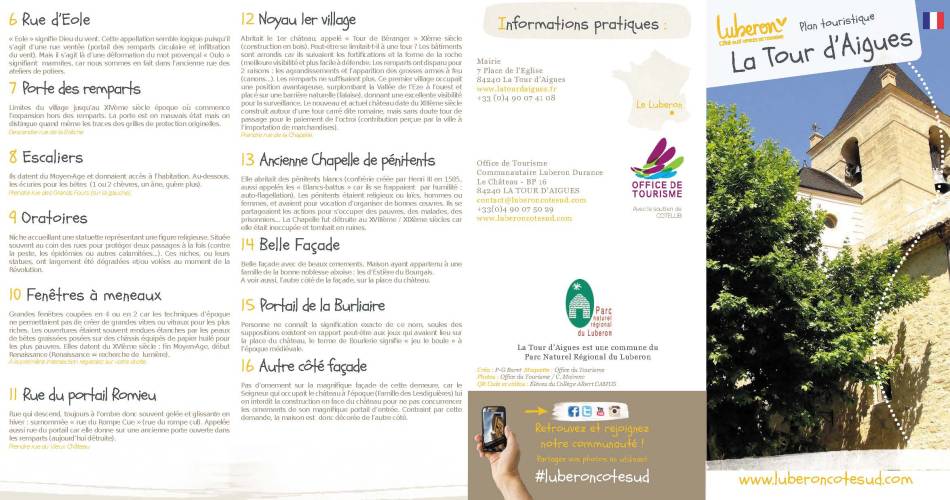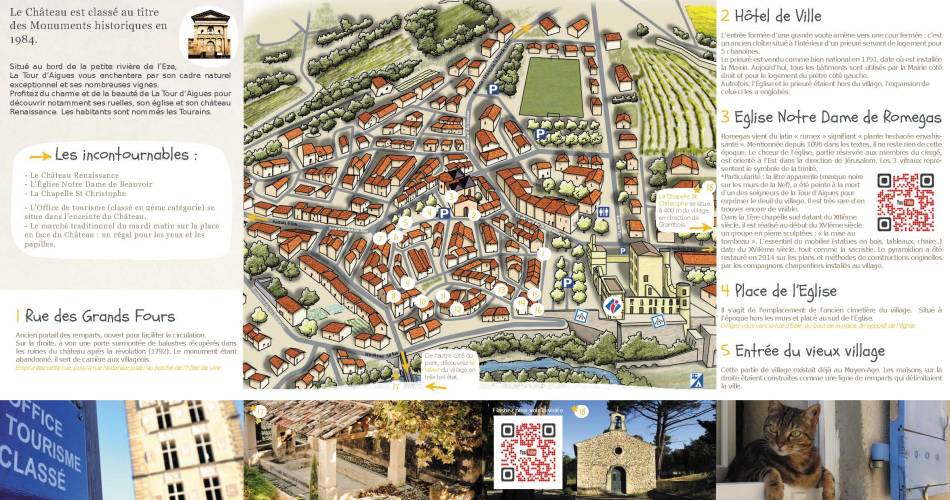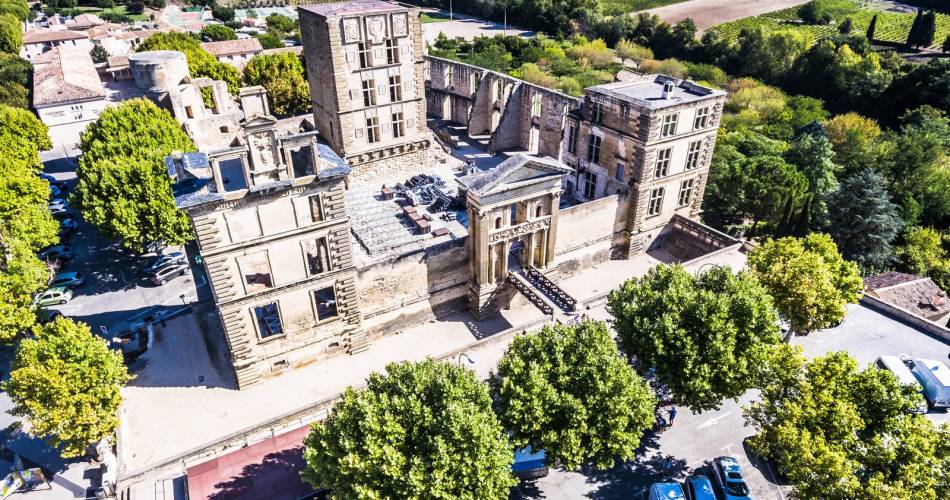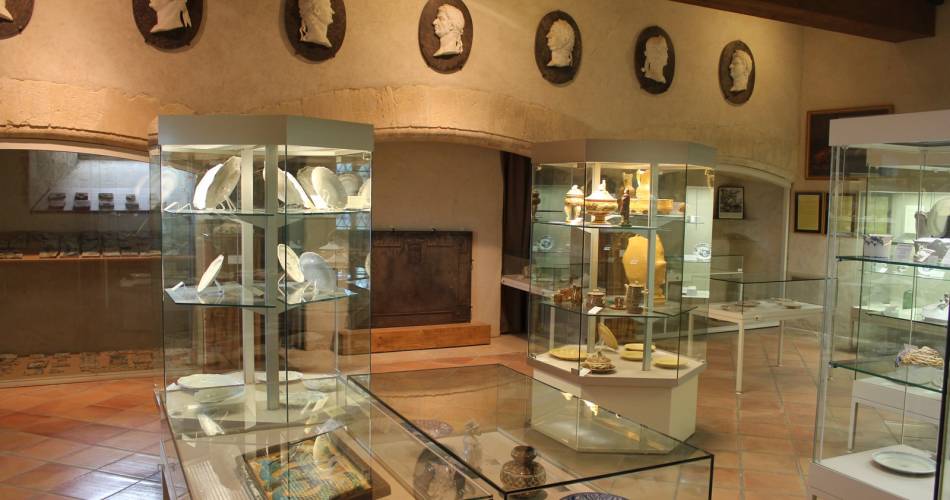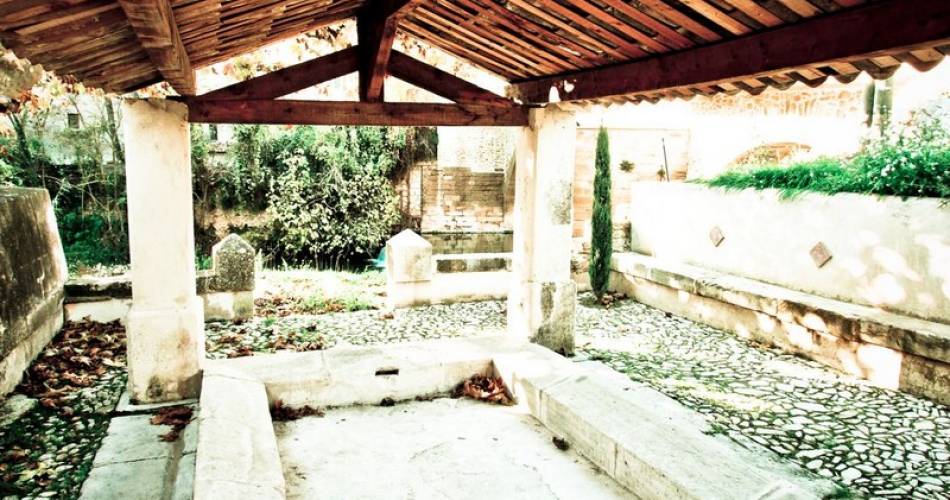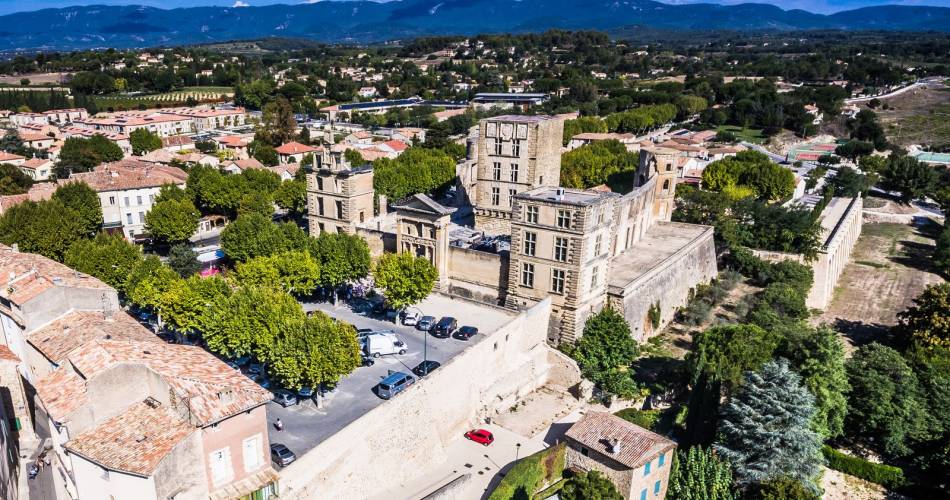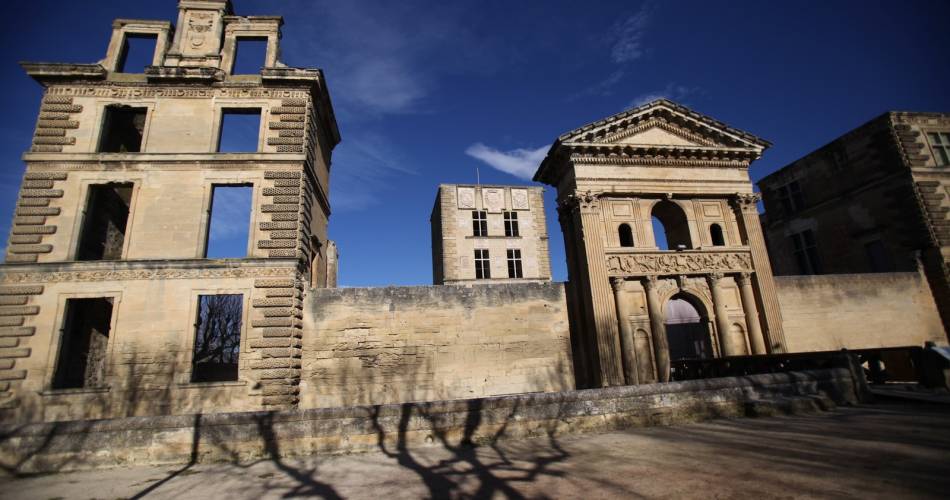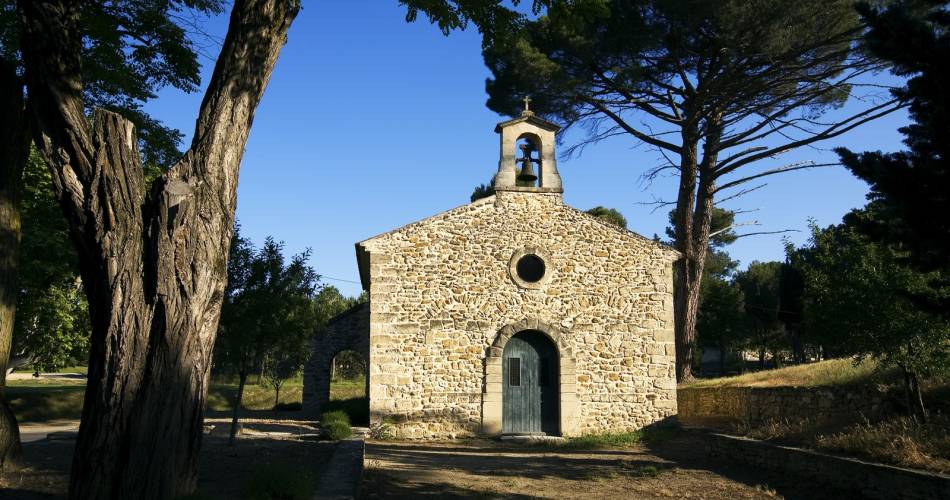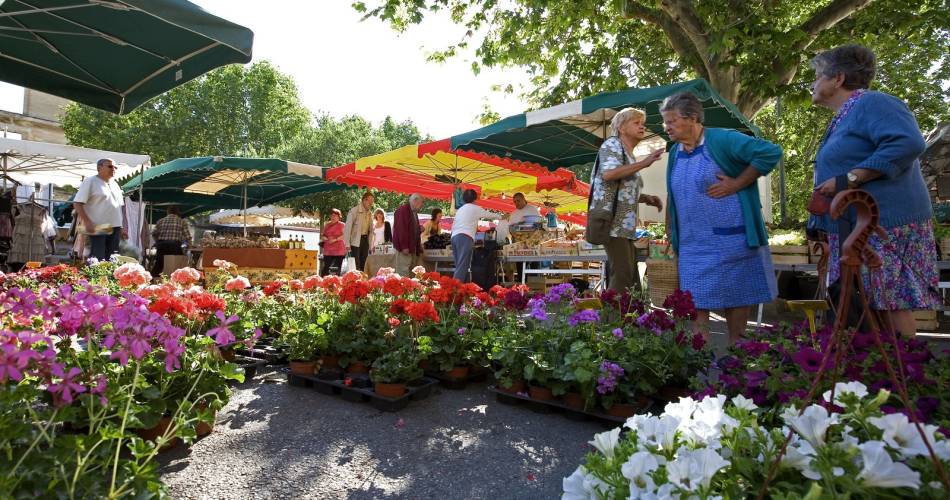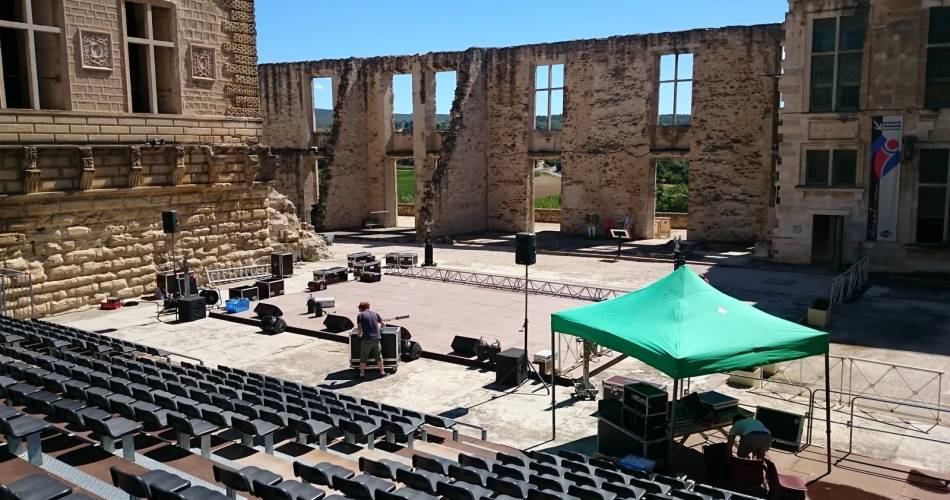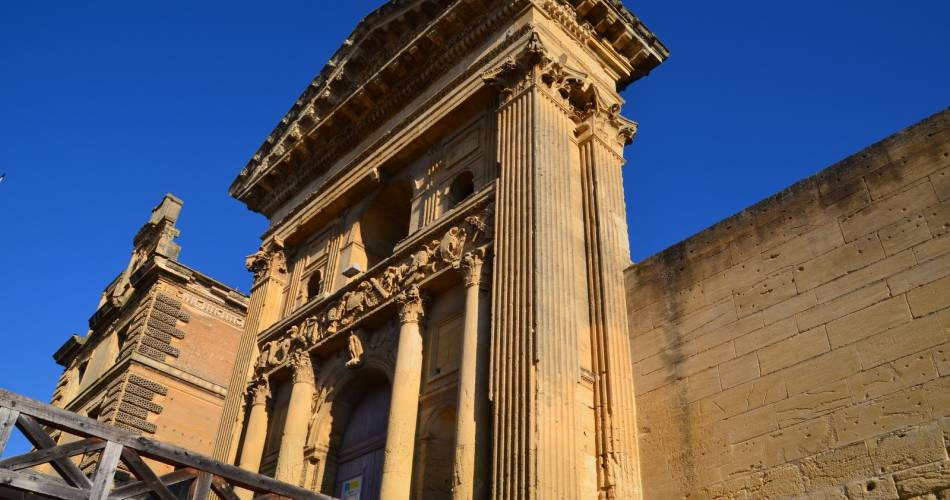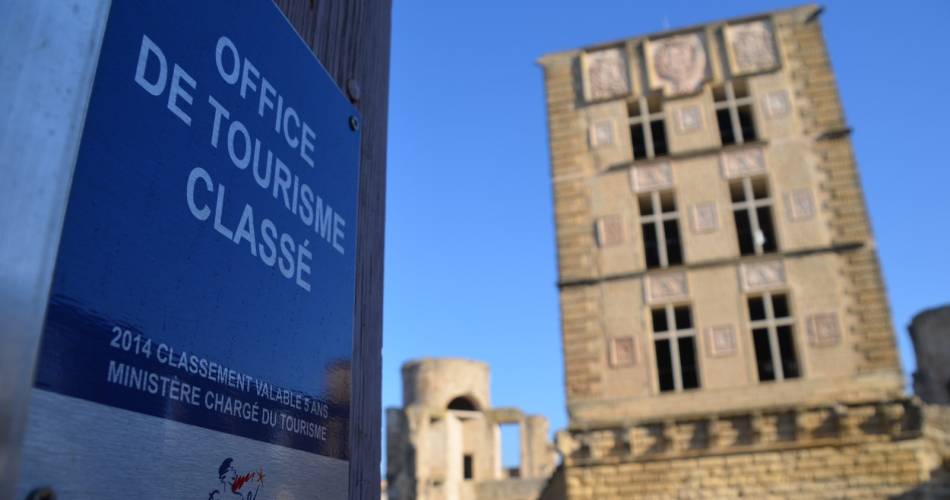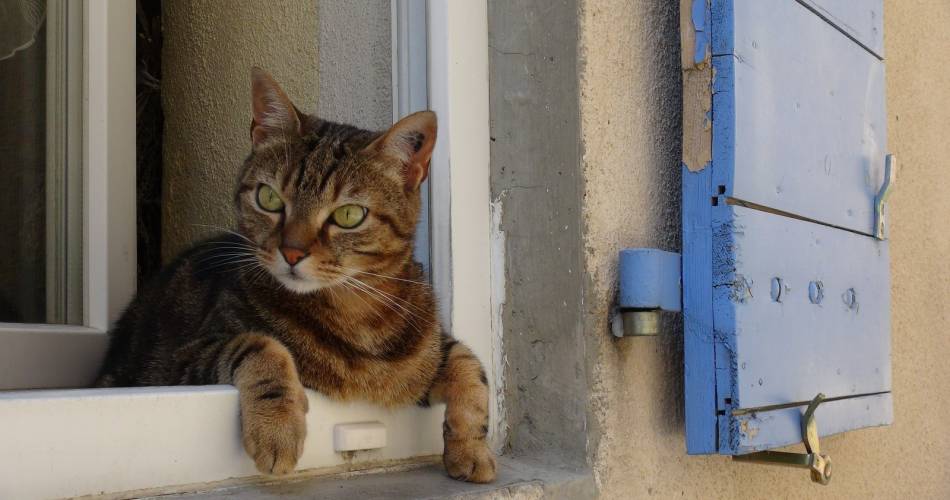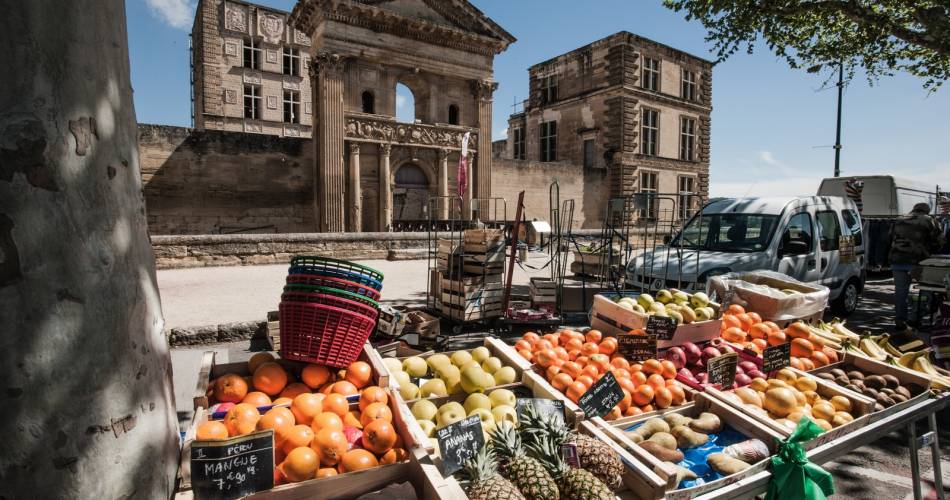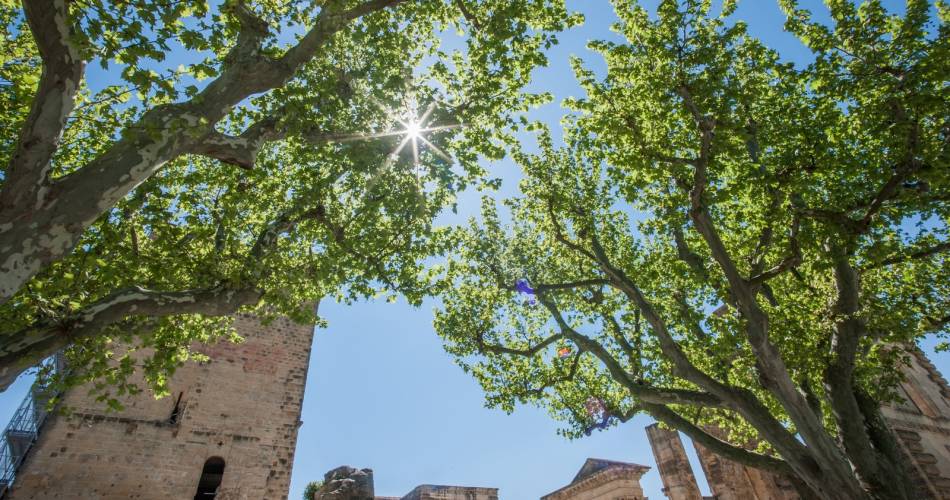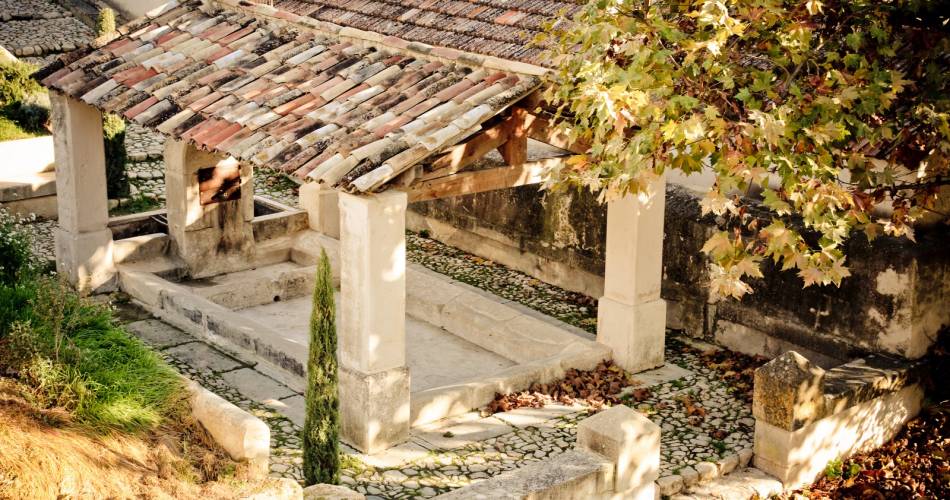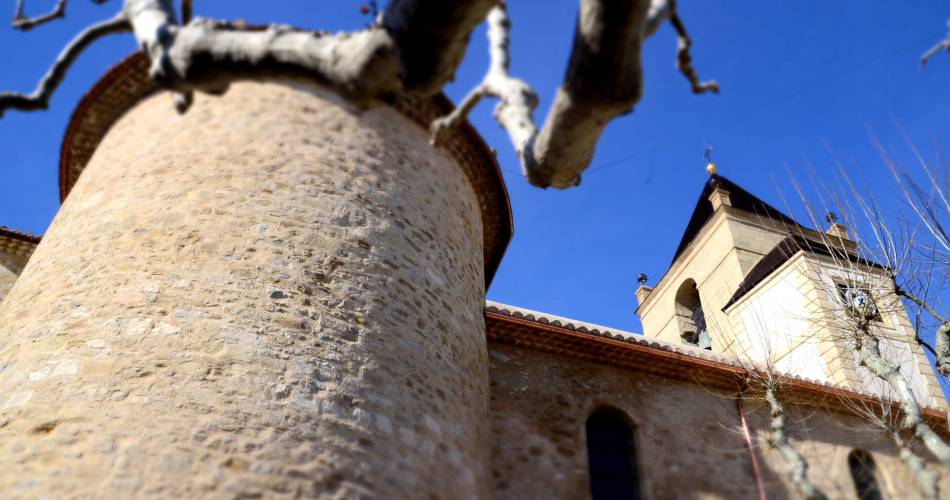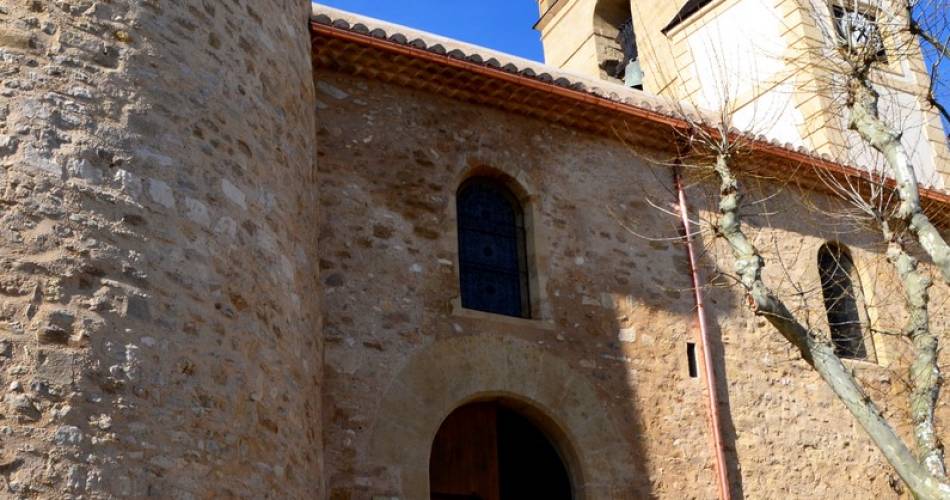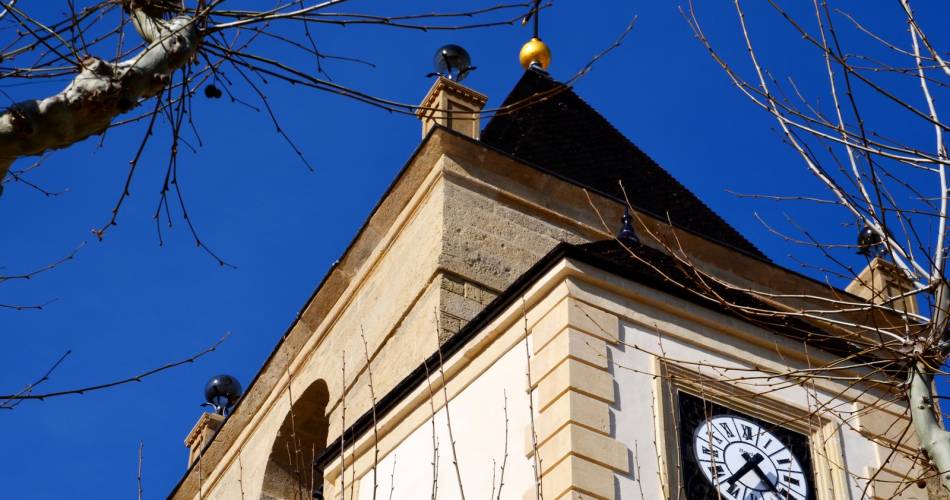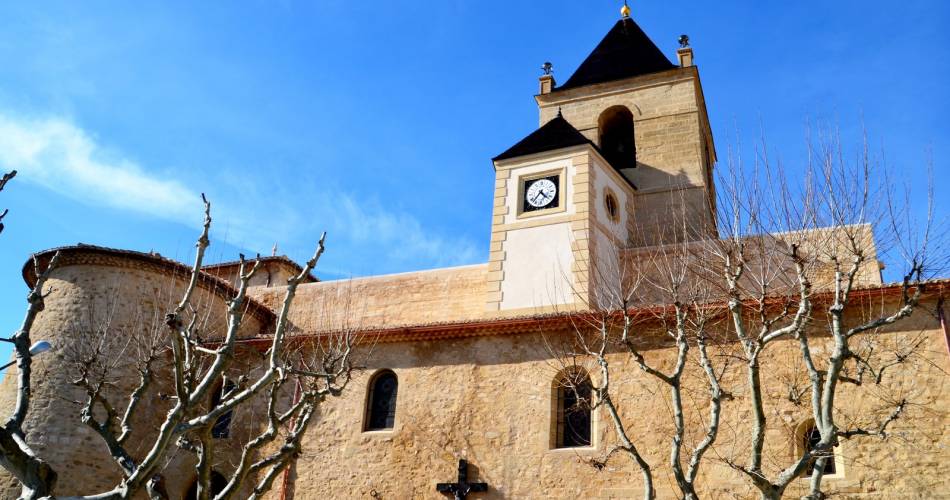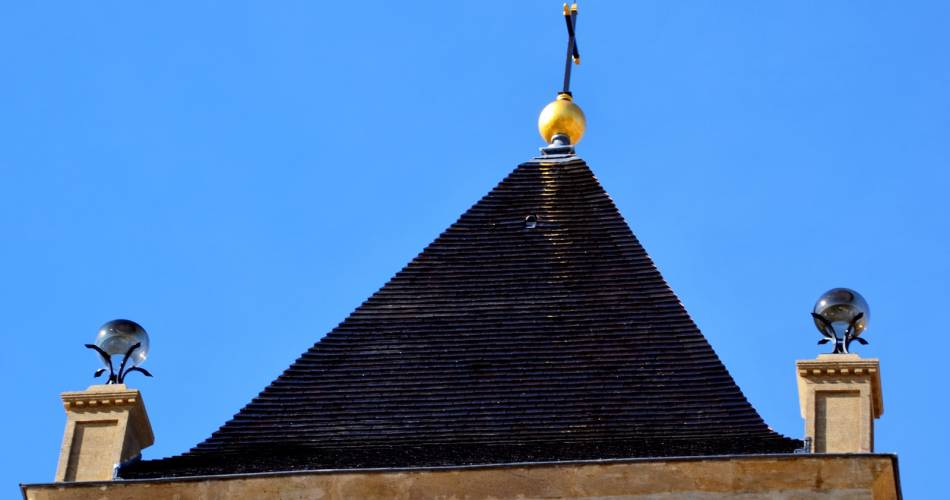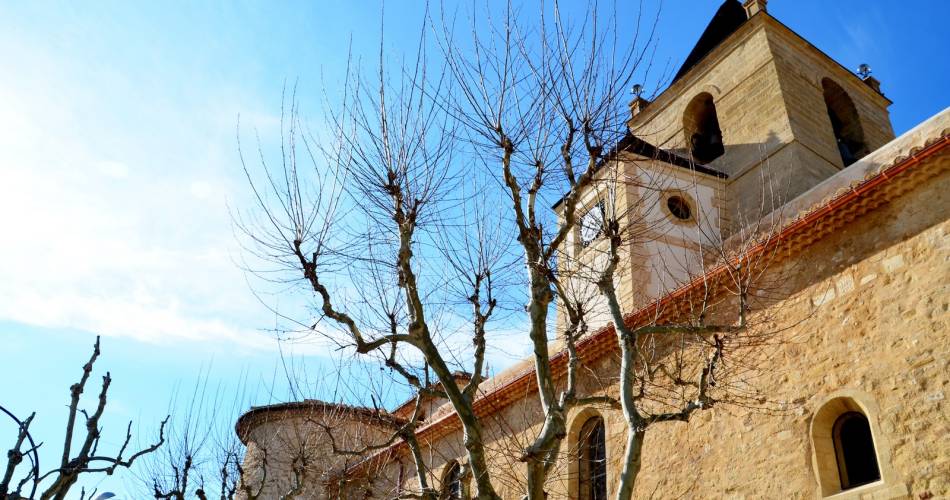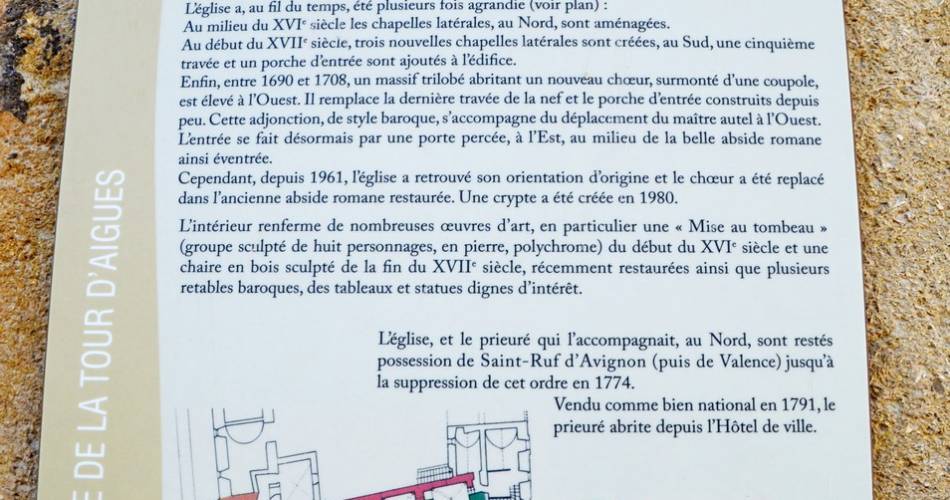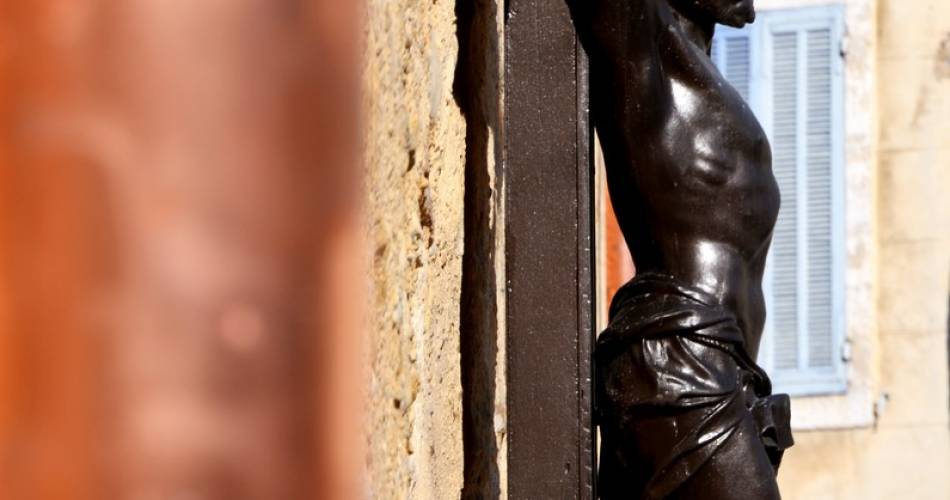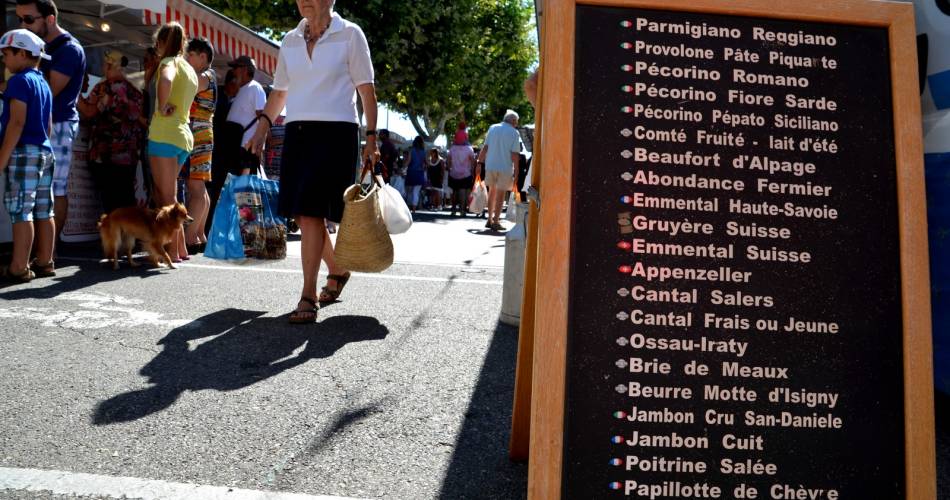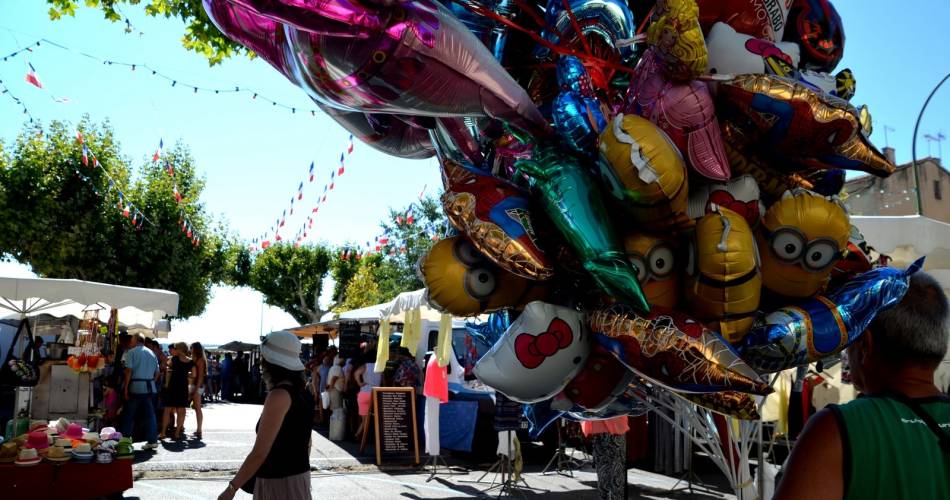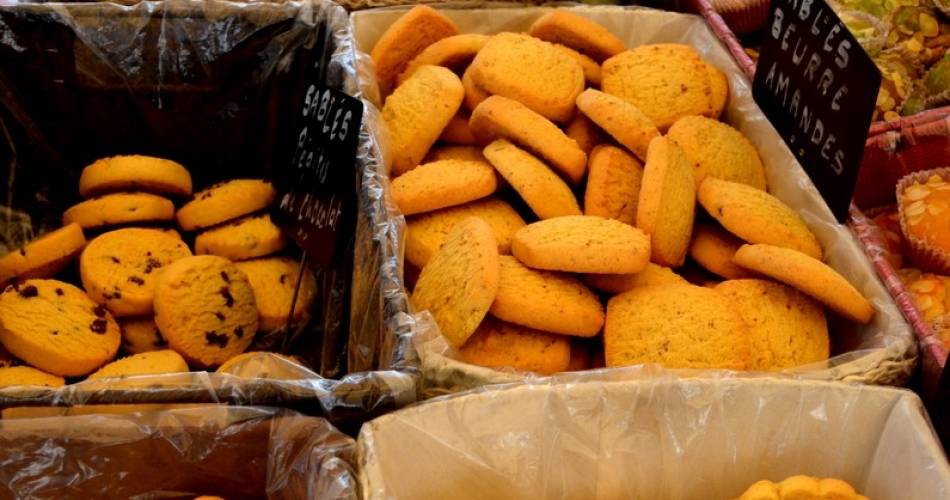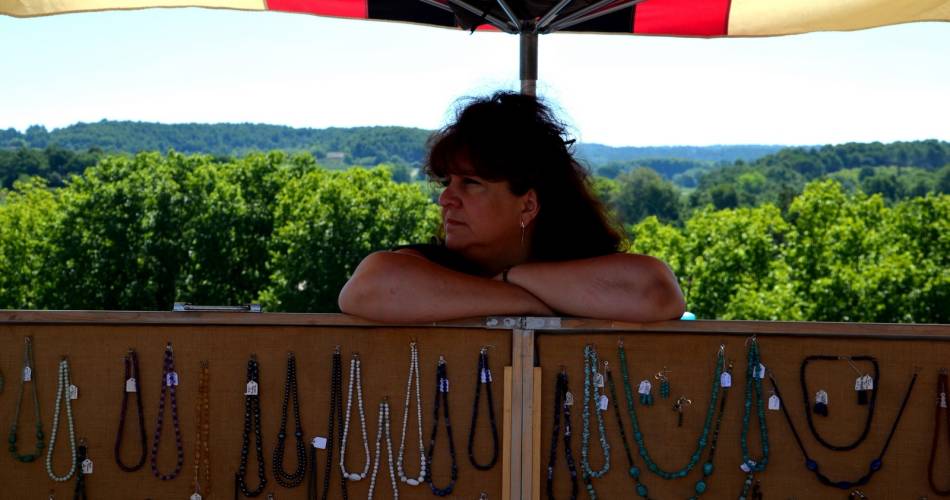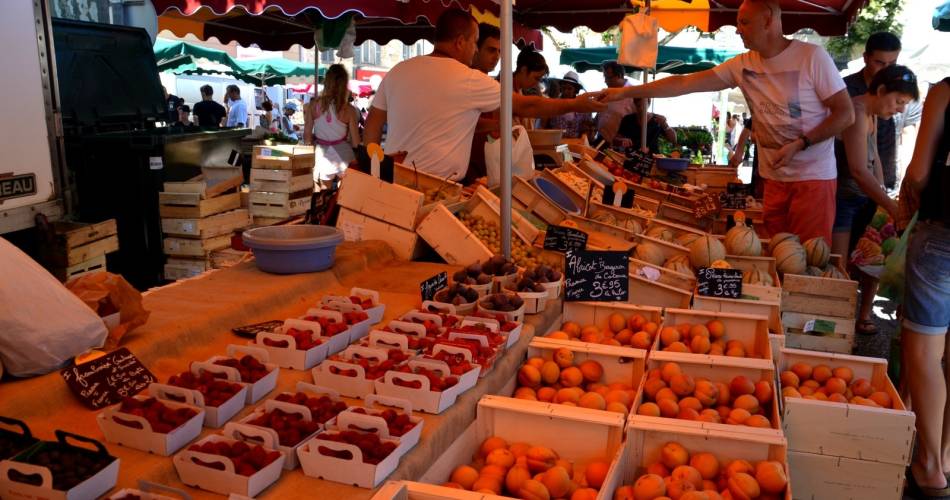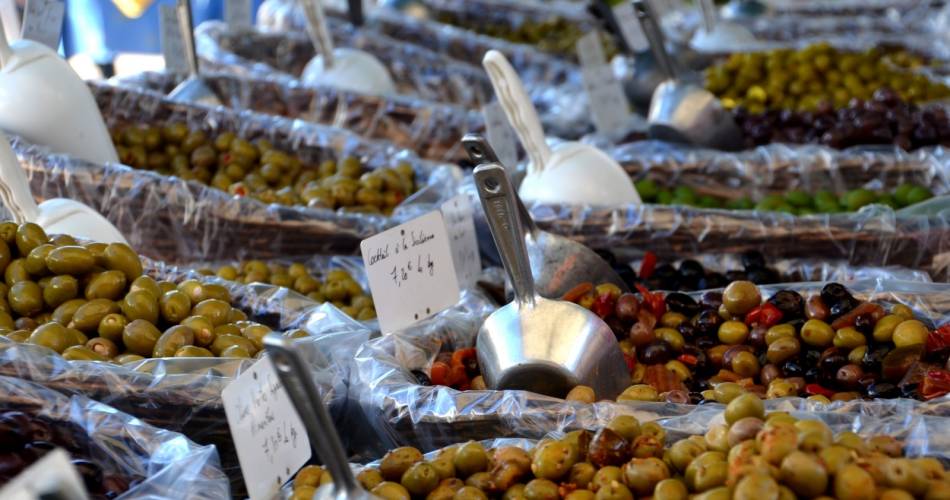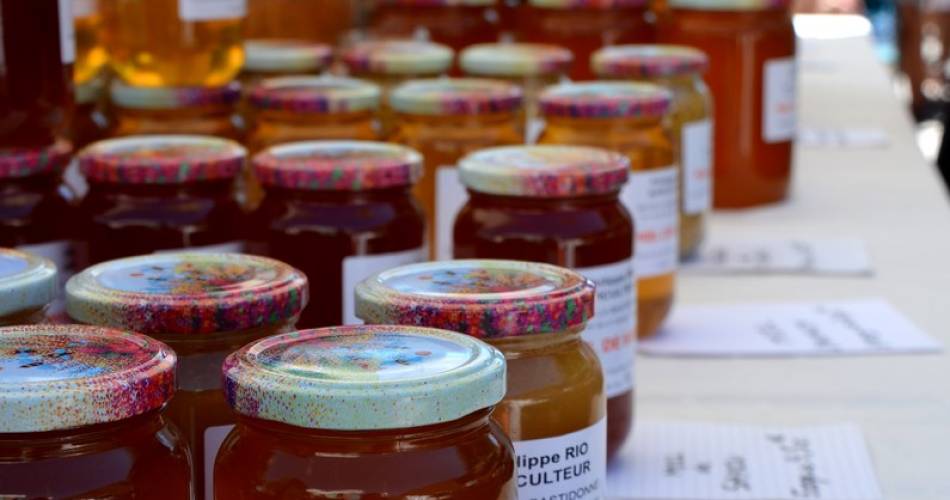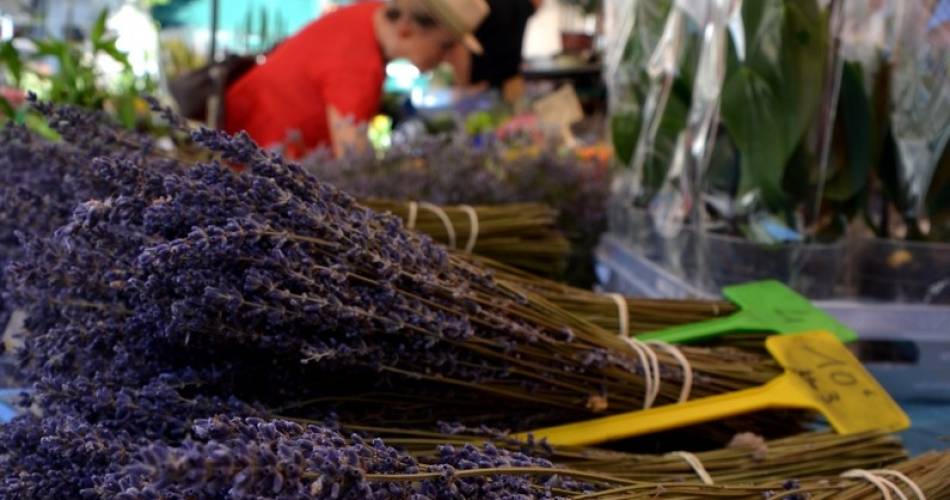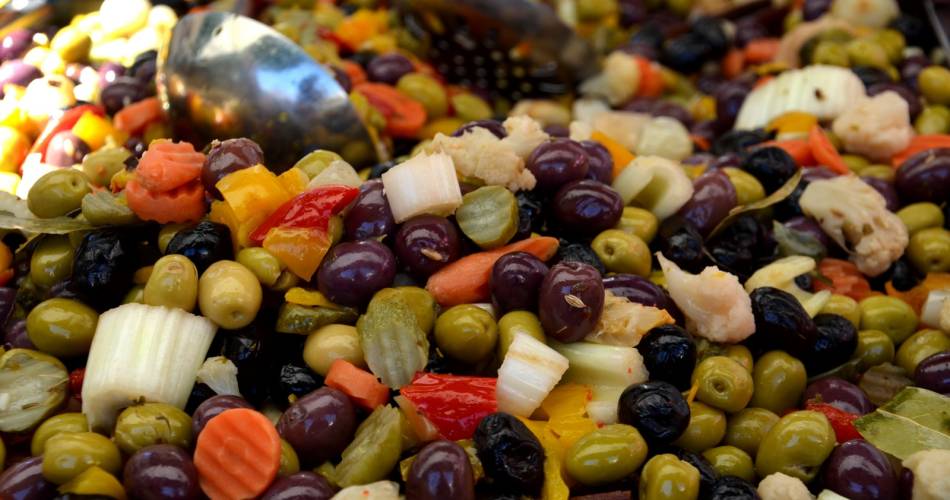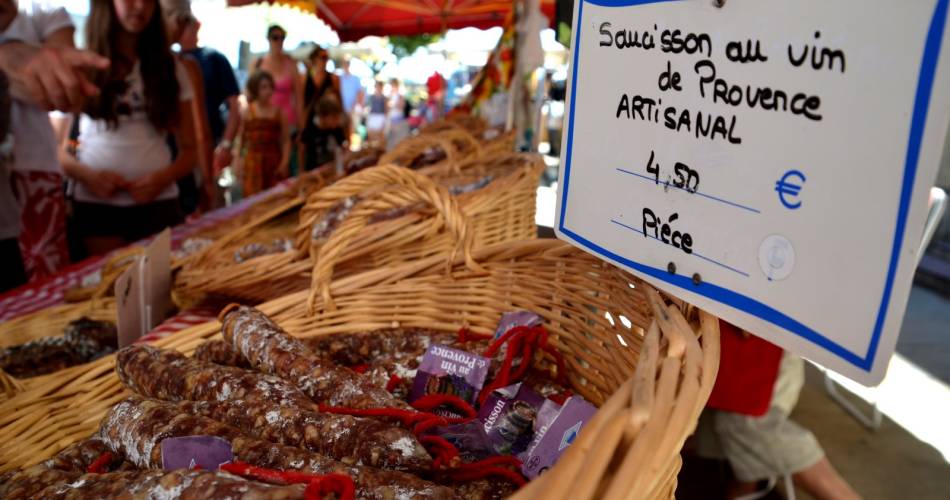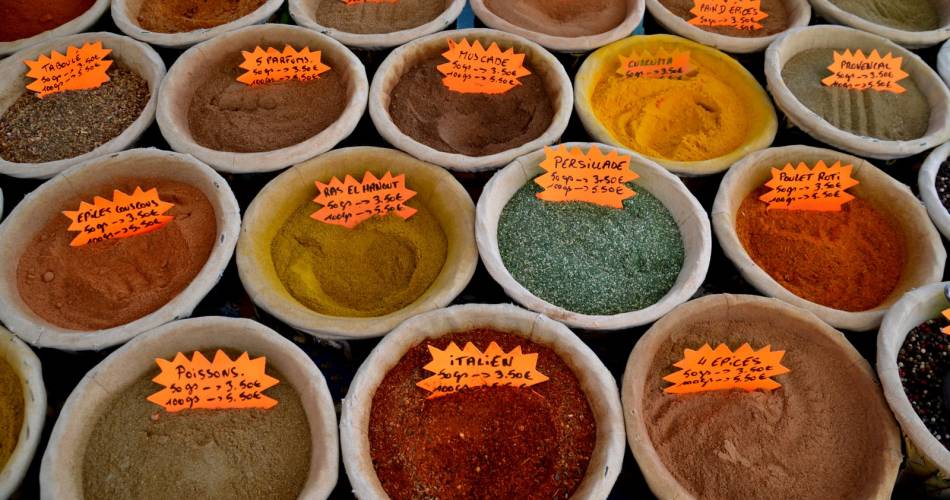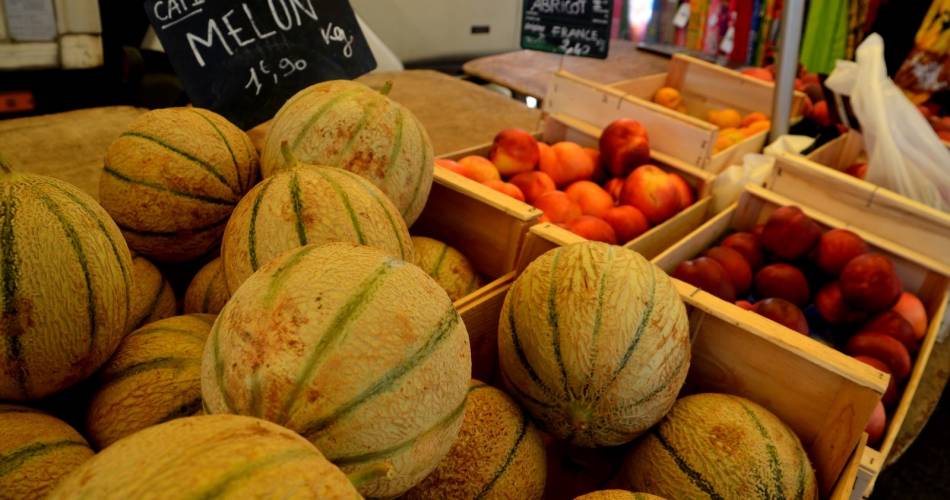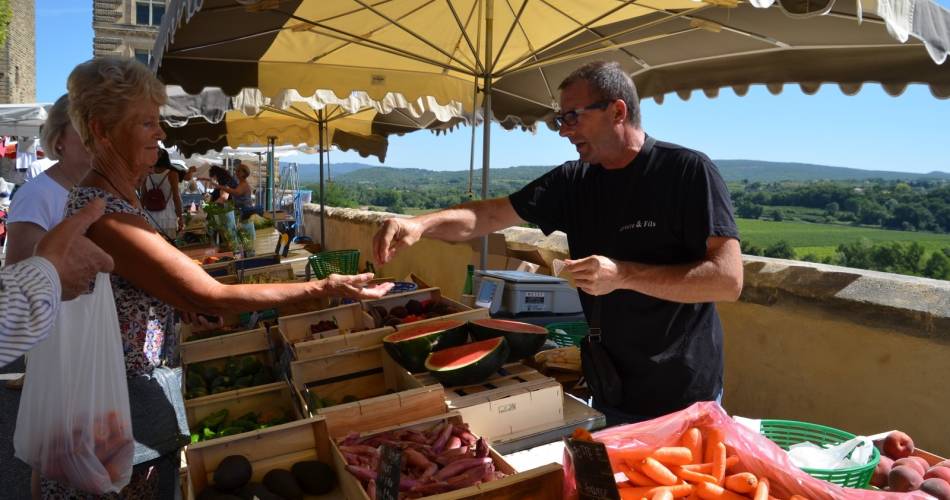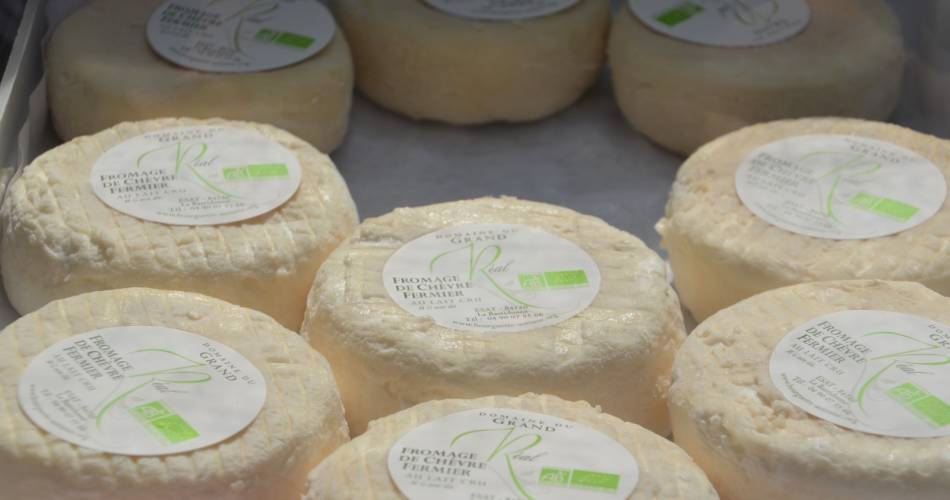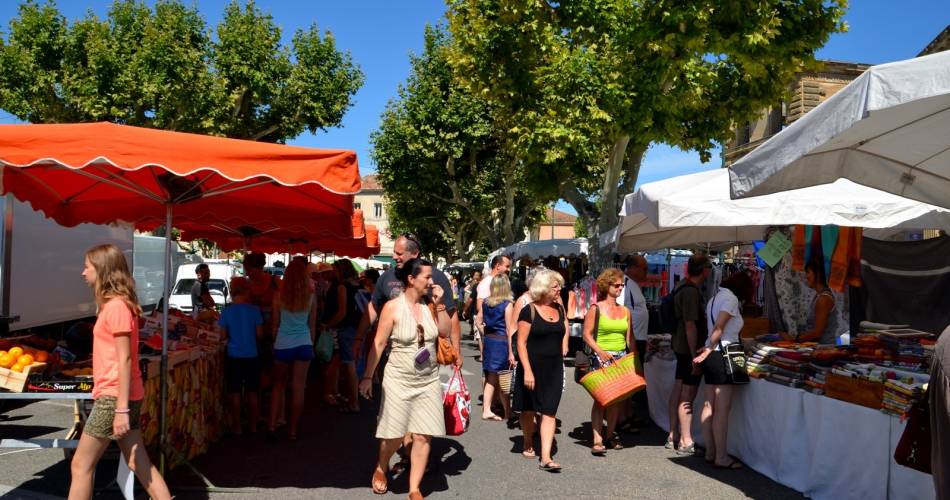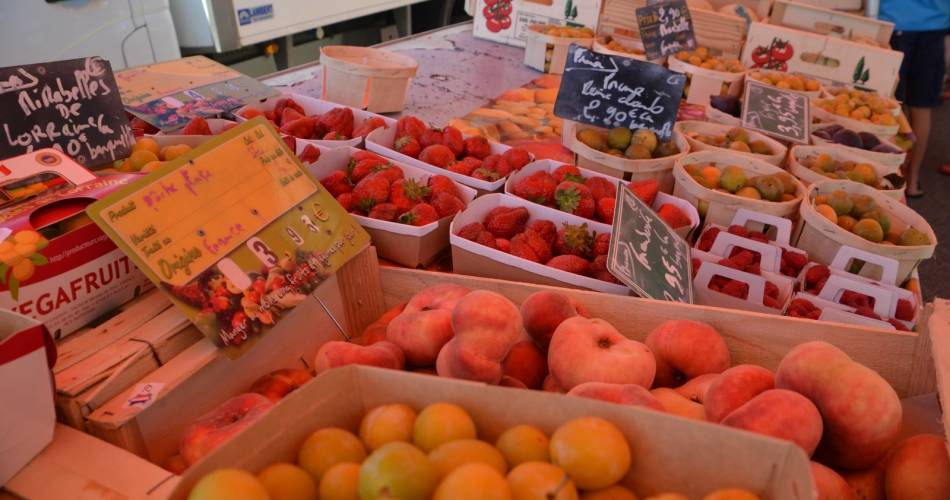La Tour-d'Aigues
La Tour d'Aigues
Tourist service in La Tour-d'Aigues :
Bordered by the Luberon and the Durance, La Tour d’Aigues is located in the heart of the Pays d’Aigues. Its name relates to water, “aïgo” in Provençal, particularly water coming from Aix: South Luberon was called Pays d’Aix (Pagus Aquensis).
Following the Celto-Ligures, the “Roman Peace” (Pax Romana) helps developing the region and the whole Provence. Dating back to the 11th Century, an embryo of village lives around a castle named Tour de Béranger, and the Prieuré, which will become a parish church, is already in place. During the 13th Century, La Tour d’Aigues, property of the De Sabran family, is prosperous, as we can see with its magnificent roman church. It is probably around that time that the castle is moved outside the village. In La Tour d’Aigues, as everywhere, the last centuries of the Middle Age are difficult: bad crops, epidemics (Black Death), wars, robberies… but the late 15th Century is an era of renaissance. The Lord is then Fouquet d’Agoult, counselor of Roi René. He creates the “Baronnie de la Tour d’Aigues” grouping several villages together (the current “Vallée d’Aigues”) and fills up the villages with alpine highlanders…who will bring the “Hérésie Vaudoise” in the region. The 16th Century sees the transformation of the medieval castle into a superb Renaissance construction under the authority of Jean-Louis Nicolas Boulier, baron of Cental. We can today see the remains of the Renaissance edifice. During the 18th Century, the village is a prosperous agricultural centre and handicraft grows (textile, earthenware). La Tour d’Aigues counts 3,000 inhabitants before the Revolution. In 1780, the castle is accidentally set on fire, then voluntarily in 1792 by the Republicans of La Tour d’Aigues’ Revolutionary Club. The castle was then devastated and looted during the entire 19th Century until it was acquired by the Conseil General de Vaucluse in 1897. La Tour d’Aigues’ countryside, which is predominantly a wine region, is nowadays part of the Parc Naturel Régional du Luberon. A village heading towards the 21st Century, La Tour d’Aigues managed to keep its “méridional” cultural heritage. La Tour d’Aigues welcomes you with its shopping, quality and diverse accommodation (B&B, rural lodging, hotels, camping) and local products such as the renowned Luberon wines.
Wandering around the old village
GUIDED TOUR
1 The “Burlière” gate (facing the castle)
remains of the 14th Century surrounding walls. Between the gate and the cliff, have a look at Estienne du Bourguet’s former house (mid 17th Century). It also opens up, at the rear, to Rue des Remparts (beautiful back door).
2 Rue de la Chapelle
got its name from the Chapelle des Pénitents Blancs that does not exist any more (sold in 1795 and then destroyed). Stunning 17th Century door at n°45. Between the street and the cliff, Rue du Vieux Château will remind you of the previous castle of which there is nothing left, built on the hill overlooking the river Eze. A little further, Rue du Portail Romieu reminds you of a second fortified entry.
3 Rue des Grands Fours n°118 and 124, beautiful 17th Century facades.
4 Rue Théolède n°28: house dating from the late 16th – early 17th Century, with an angle “prayer alcove”. The statue of a saint inside the alcove was supposed to protect the street.
5 Rue de la Brèche, n°38: this house is accessible via an outdoor staircase, under which was a stable. At that time, there did not use to be indoor staircases. Most of these outdoor staircases were destroyed because they limited traffic. At n°39, mid-19th Century sculpted decoration.
6 Portail de la Font:
along with the “Burlière” gate, remains of the 14th Century surrounding walls.
7 Rue d’Eole, formerly Rue des Olles (the “Olliers” were pottery makers). House n°9, leaning against the fortified walls, dates back to the second half of the 17th Century.
8 At n°2, beautiful 17th Century entrance.
9 Place de l’Eglise, formerly the village cemetery, south of the church. The cemetery was transferred outside the village at the end of the 18th Century. N°70 is a beautiful 17th Century entrance (house of Paul Eyssavel, Provençal poet).
10 Rue La Fayette n°16 and n°23-25.
11 17th Century facades.
12 Rue des Grands-Fours n°83: 18th Century facade. N°6668, two houses sharing a single facade on 3 levels. Late 18th Century.
13 Rue Urtis n°33: entry door from the 19th Century.
14 Corner of Rue des Grands-Fours and Rue du Murier: look at a sculpted corner stone with “maconniques” symbols (triangle, equerre, level = equality, David star…)
15 Rue de l’Eglise n°9, beautiful entry door with sculpted decoration. 17th Century.
16 Church and old Prieuré: church “Notre Dame de Romegas” and its Prieuré (now the town hall). This church, partly roman, was enlarged and rebuilt on several occasions. It holds various art pieces.
17 Rue des Maisons Neuves: two major 18th Century buildings holding small dwellings accessible via common staircases, supposedly meant to lodge the then numerous blue-collar population.
18 Rue du Lavoir: n°6, former chapel “Notre Dame de Pitié des Aires, extensively damaged (founded in 1679 and abandoned in 1794).
19 Rue Antoine de Très, n°19, 18th Century house entrance with balcony.
20 Castle: after its medieval period (12th – 16th Century, the castle, starting in 1550, is profoundly transformed with the Renaissance architecture movement, which can be seen with its main portal. Burnt in 1792, it is restored from 1974 by the Conseil General de Vaucluse. The castle is open to public since 1985, and hosts various shows and exhibitions throughout the year, the highlight being its summer festival. The castle has become the main cultural centre in southLuberon.
EXTENSION
A longer tour, around the old village, allows the discovery of:
- The old wash house at the Pont de l’Eze (the bridge over the river Eze)
- A stunning view of the castle’s south facade, with its former gardens
- Chapel Saint-Christophe, built in 1558. Located in the park of the castle, it was recently restored.
Wandering around the old village
GUIDED TOUR
1 The “Burlière” gate (facing the castle)
remains of the 14th Century surrounding walls. Between the gate and the cliff, have a look at Estienne du Bourguet’s former house (mid 17th Century). It also opens up, at the rear, to Rue des Remparts (beautiful back door).
2 Rue de la Chapelle
got its name from the Chapelle des Pénitents Blancs that does not exist any more (sold in 1795 and then destroyed). Stunning 17th Century door at n°45. Between the street and the cliff, Rue du Vieux Château will remind you of the previous castle of which there is nothing left, built on the hill overlooking the river Eze. A little further, Rue du Portail Romieu reminds you of a second fortified entry.
3 Rue des Grands Fours n°118 and 124, beautiful 17th Century facades.
4 Rue Théolède n°28: house dating from the late 16th – early 17th Century, with an angle “prayer alcove”. The statue of a saint inside the alcove was supposed to protect the street.
5 Rue de la Brèche, n°38: this house is accessible via an outdoor staircase, under which was a stable. At that time, there did not use to be indoor staircases. Most of these outdoor staircases were destroyed because they limited traffic. At n°39, mid-19th Century sculpted decoration.
6 Portail de la Font:
along with the “Burlière” gate, remains of the 14th Century surrounding walls.
7 Rue d’Eole, formerly Rue des Olles (the “Olliers” were pottery makers). House n°9, leaning against the fortified walls, dates back to the second half of the 17th Century.
8 At n°2, beautiful 17th Century entrance.
9 Place de l’Eglise, formerly the village cemetery, south of the church. The cemetery was transferred outside the village at the end of the 18th Century. N°70 is a beautiful 17th Century entrance (house of Paul Eyssavel, Provençal poet).
10 Rue La Fayette n°16 and n°23-25.
11 17th Century facades.
12 Rue des Grands-Fours n°83: 18th Century facade. N°6668, two houses sharing a single facade on 3 levels. Late 18th Century.
13 Rue Urtis n°33: entry door from the 19th Century.
14 Corner of Rue des Grands-Fours and Rue du Murier: look at a sculpted corner stone with “maconniques” symbols (triangle, equerre, level = equality, David star…)
15 Rue de l’Eglise n°9, beautiful entry door with sculpted decoration. 17th Century.
16 Church and old Prieuré: church “Notre Dame de Romegas” and its Prieuré (now the town hall). This church, partly roman, was enlarged and rebuilt on several occasions. It holds various art pieces.
17 Rue des Maisons Neuves: two major 18th Century buildings holding small dwellings accessible via common staircases, supposedly meant to lodge the then numerous blue-collar population.
18 Rue du Lavoir: n°6, former chapel “Notre Dame de Pitié des Aires, extensively damaged (founded in 1679 and abandoned in 1794).
19 Rue Antoine de Très, n°19, 18th Century house entrance with balcony.
20 Castle: after its medieval period (12th – 16th Century, the castle, starting in 1550, is profoundly transformed with the Renaissance architecture movement, which can be seen with its main portal. Burnt in 1792, it is restored from 1974 by the Conseil General de Vaucluse. The castle is open to public since 1985, and hosts various shows and exhibitions throughout the year, the highlight being its summer festival. The castle has become the main cultural centre in southLuberon.
EXTENSION
A longer tour, around the old village, allows the discovery of:
- The old wash house at the Pont de l’Eze (the bridge over the river Eze)
- A stunning view of the castle’s south facade, with its former gardens
- Chapel Saint-Christophe, built in 1558. Located in the park of the castle, it was recently restored.
Equipment
- Public WC
- Meeting room
- Car park
- Bar
- Defibrillator
- Camper van reception area
- Play area
- Picnic area
- Book shop
- Media library
- Exhibition space
- Entertainments room
Services
- Pets welcome
- Coach access
- Motorhomes allowed
- Shop
- Set down on-site for groups
- Wi-fi
- Tourist brochures
- Tourist information
- Cash point
- Restaurant
- Guided tours
- Farm shop
- Takeaway/cooked dishes
- Leisure Center
- Spot photo
Dates and times
All year round, daily.
Languages spoken
- German
- English
- French
Prices
Free access.
Contact
La Tour d'AiguesMairie de la Tour d'Aigues
Place de l'Eglise
84240 La Tour-d'Aigues
Tel :
View number
04 90 07 41 08
E-Mail : accueil.mairie@latourdaigues.fr
Website : http://www.latourdaigues.fr/
E-Mail : accueil.mairie@latourdaigues.fr
Website : http://www.latourdaigues.fr/
Downloads
